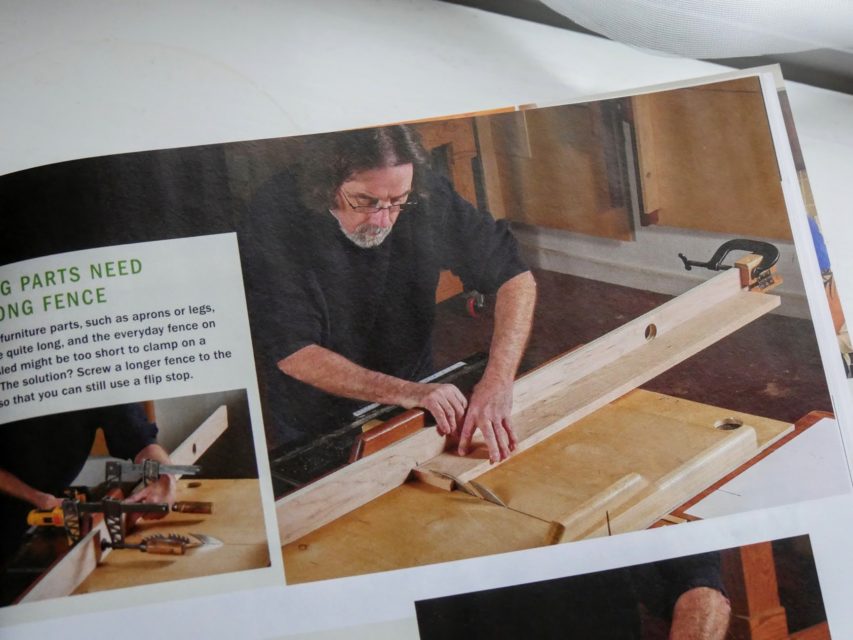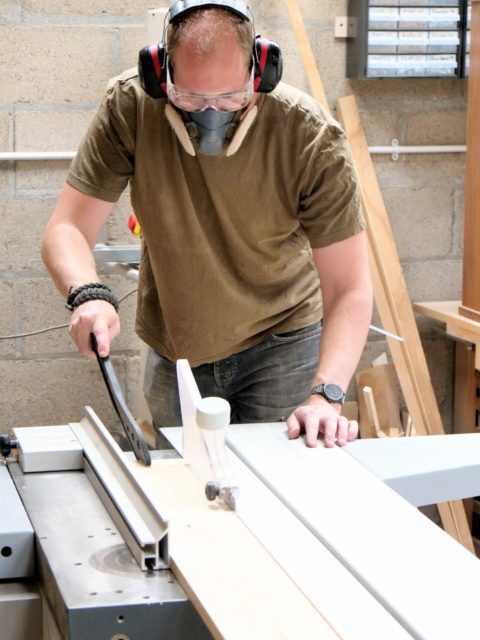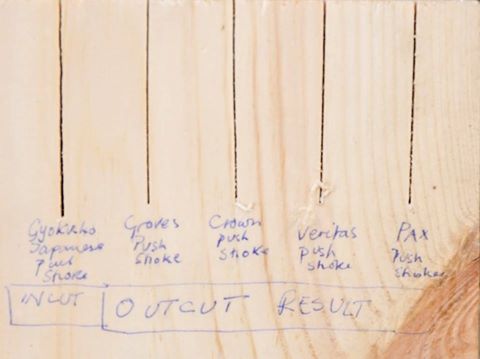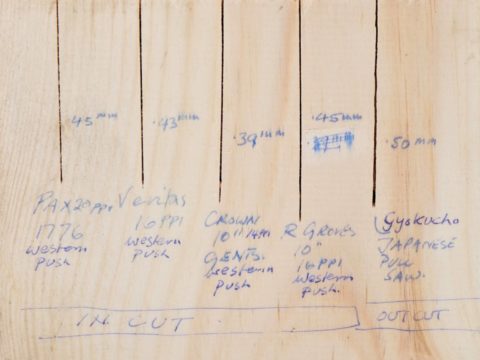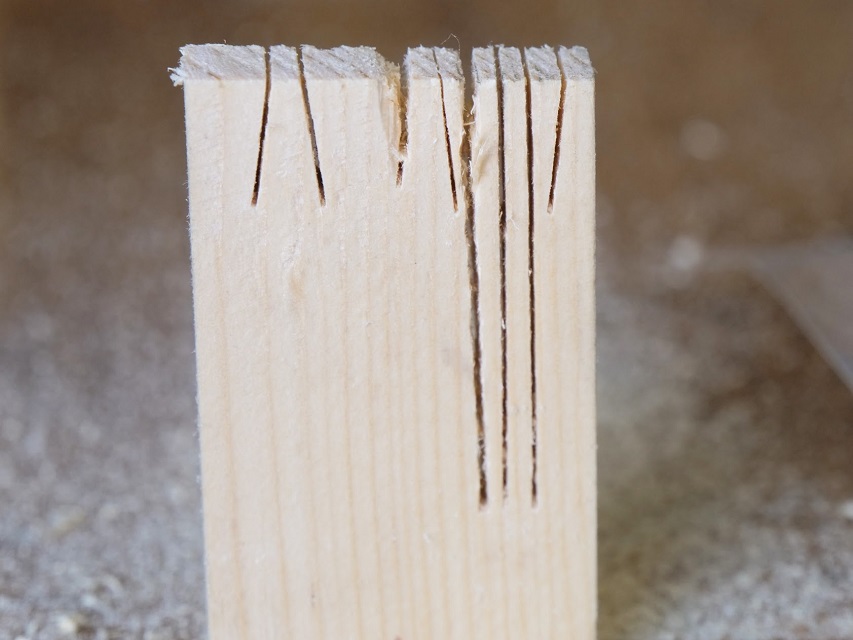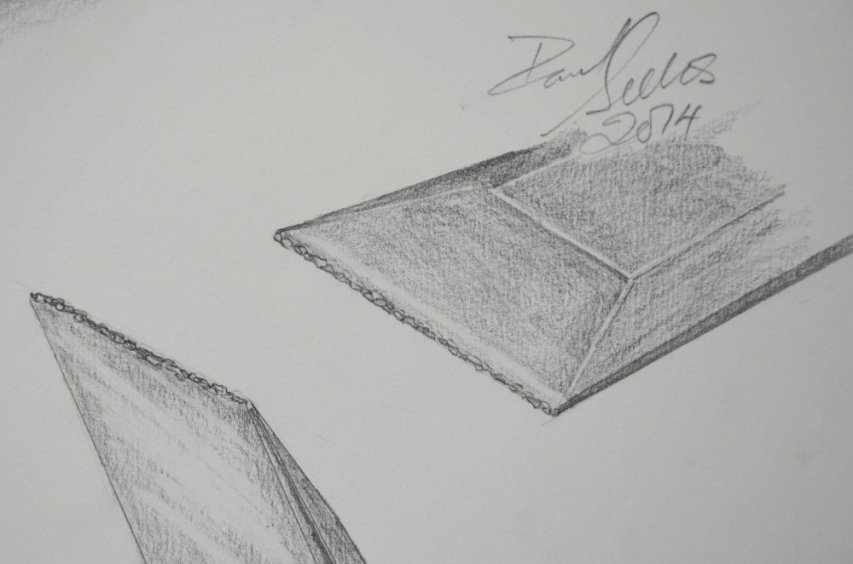I’ve bought hundreds of woodworking magazines over the years, and in almost every one of them they show machine tool operations where the blade guards have been removed “to clearly illustrate the task”. I understand that reasoning, but the cumulative effect of literally thousands of well-posed, clear, and dangerous practices is almost certainly to lessen the background awareness of new woodworkers to safe use of the tools. When I first got into woodworking, I was buying at least half a dozen magazines every month (ShopNotes, Woodsmith, Popular Woodworking, Fine Woodworking, Woodworker’s Journal, etc.) because I hadn’t touched a real woodworking tool since I was in middle school (and I hated shop at that time anyway), and I knew I needed as much help as I could get.
If I hadn’t been a safety wuss, I’d likely have internalized the “common wisdom” that everyone always takes off the blade guard of the table saw — because they so rarely showed up in the magazine articles and when they did, they made the photo less helpful because of the area of the work they obscured. Overheard conversations at woodworking shows often included comments about throwing away the stock blade guard as soon as possible … and not to replace it with an expensive after-market item, either.
Paul Sellers, who generally works with hand tools, has also been irritated by this and his latest blog post takes the magazines to task:
I thumbed through recent issues of wood mags and though I have known it for years, I thought it might be good to tackle the giant issue surrounding machine safety as some woodworking magazines don’t always project the right image. In fact some give the impression that no safeguards or safety equipment is necessary at all, the exact opposite of what the woodworking machine industry teaches altogether. My concern is that the woodworking magazines get most of their support from amateur woodworkers looking for guidance and inspiration. This advertising sector caters to the amateur woodworker industry with only a little crossover into professional realms. Thumbing through the magazines I was not really considering safety at all, just looking for content of interest to me, but I soon became conscious of the lack of safety equipment being used, which started my inbuilt alarm bells started ringing page after page. See if the images below don’t cause the same sense of concern for you.
[…]
So here we are, five images spanning a few pages with not a face shield in sight and only one pair of safety glasses between four of the five images. Then we have zero regard for any dust protection issues and that is of great concern to all woodworkers. Now I know you can say to me that all woodworkers know about machine dust, tablesaw kick-back issues, noise that causes partial impairment and even permanent hearing loss and so on. Of course that is not really true at all. The people in the pictures are all professional-level woodworkers, authors, editors and so on. Evidently they don’t feel the image they convey with regards to safety is questionable. If that is so, why would we expect the amateurs and those brand new to woodworking to be conscious of dangers that are often less obvious and even well hidden.
The trip mechanism in my brain asked the question, why is it that something so unarguably dangerous as machine woodworking is presented with such passivity toward safety and with no need to show industry standards for normal health and safety protocol put together by professional bodies of the woodworking industry itself? Yes, I know all the reasonable arguments. “They are just posing and not really working.” “The machines are not switched on, perhaps, therefore there is no need to wear any safety equipment. Why would you?” Well, actually, in a couple of the images, the tablesaw is running and there is no need for anyone looking in, to believe that the others are not either anyway.
Image 1:
a: The man has no safety mask on at all b: There is no blade guard over the blade c: The man has no safety glasses on. d: The man has no protective dust mask or respirator equipment.
The dangers ever present in this scenario are: 1: He is breathing harmful dust as he works with the machine no matter how good any dust extraction is. 2: Even though there is a riving knife in place my experience has shown that the wood can still close over on the rear upthrust of the blade and and kick-back the wood at his upper body and face. 3: There is no doubt that the small offcut is a missile waiting to catch. The drafts and movement of wood often cause an upthrust on small pieces and can deliver them to the rear upthrust of the blade once detached as shown. 4: The dust from tablesaws is of course extremely fine and circulates in the atmosphere even with the best dust extraction in the world. This dust is some of the most harmful to the whole respiratory system, eyes, nasal passages and throat.
I use a tablesaw sled similar to the one shown in the photo above, and to use it I have to remove the blade guard on my saw. I’ve considered adding a plexiglass strip over the blade opening for quite some time, to provide at least some protection against offcuts being kicked back from the back of the saw blade. I always use hearing protection when using any of my power tools, but I don’t always add a dust mask unless I’m doing a lot of cutting over a short period of time. Perhaps I should reconsider that.
So why do the editors allow poses that include the faces? As far as information goes the faces or facial expressions give nothing to the reader and are inconsequential. Mostly it’s to do with presenting the acceptable image that down plays the essentiality of safety to its core audience. In my view it is of little value to put a little disclaimer in the corner of a page if the images send another message that woodworking without protective equipment is perfectly safe. No one is exempted from responsibility in this. Not the authors, the photographers, the editors or the publishers. They all have responsibility for promoting unsafe practices. Even with safety equipment things go wrong in a split second. We can take care of our lungs, eyes and faces with very low-maintenance equipment.
My advice to any new woodworker wanting to compliment their work by using machines for dimensioning stock would be to find courses tailored to specific machines. Good online material is available from recognised institutions too. You must be careful of course, as looking for information based on good experience can be hard as some things are based more on opinion than experience. Look for experienced teachers and organisations with the right background. Generally these are information based but then you must put into practice what you are taught and by experience you will gain the experience you need to anticipate potential issues. No one else can substitute for your individual responsibility.

